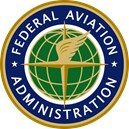Advancing ULD Certification
Simplifying Global Aviation Standards



Understanding Unit Load Device (ULD) certification can often feel like traversing a maze of technical jargon and regulations, seemingly relevant only to industry insiders.
Historically, aviation certification operated within national frameworks, with each country overseeing its aircraft and equipment, including ULDs such as containers, pallets, air cargo pallet nets, and straps. However, as globalization transformed the industry, the need for consistent quality standards across borders became imperative. To address this, Validation Design Approval (VDA) was introduced, requiring importing countries to review design documentation from exporting authorities before approving.
The concept of cross-country VDA for ULDs emerged as globalization reshaped the industry, emphasizing the necessity for harmonized standards. While the specific inception date may vary across different aviation authorities, the evolution of this concept spanned years or even decades as regulations adapted to facilitate international trade and cooperation.
In Europe, the establishment of the Joint Aviation Authority (JAA), later evolved into the European Aviation Safety Agency (EASA), streamlined certification across member states, replacing fragmented systems with a unified standard for all EU members.
A recent milestone in this progression is the landmark agreement between the FAA and EASA, detailed in Revision 5 of the "Technical Implementation Procedures for Airworthiness and Environmental Certification." Known as "reciprocal acceptance," this agreement mandates mutual recognition of each other's Technical Standard Order (TSO) and European Technical Standard Order (ETSO) authorizations.
This development significantly simplifies the certification process, obviating the need for additional approvals when utilizing products from the counterpart's jurisdiction. Moreover, the agreement retroactively covers existing TSO/ETSO approvals, ensuring a seamless transition for airlines.
For ULD operations, airlines based in the US or EASA regions can now confidently utilize ULDs from either jurisdiction without additional certification requirements, except "Active ULDs" like TCC, which still require specific FAA approvals.
This progressive agreement represents a substantial step forward in harmonizing aviation regulations, promising increased efficiency and interoperability for industry stakeholders globally.
How Can We Help You
Welcome to CargoSecures, your trusted partner in air cargo safety. How can we tailor your order today? Specify your requirements below, from customizable aesthetics to ultra-durable nets and webbing crafted with the world’s strongest yet lightest fiber. Let's craft a solution that ensures your cargo reaches its destination securely with the least added weight.
